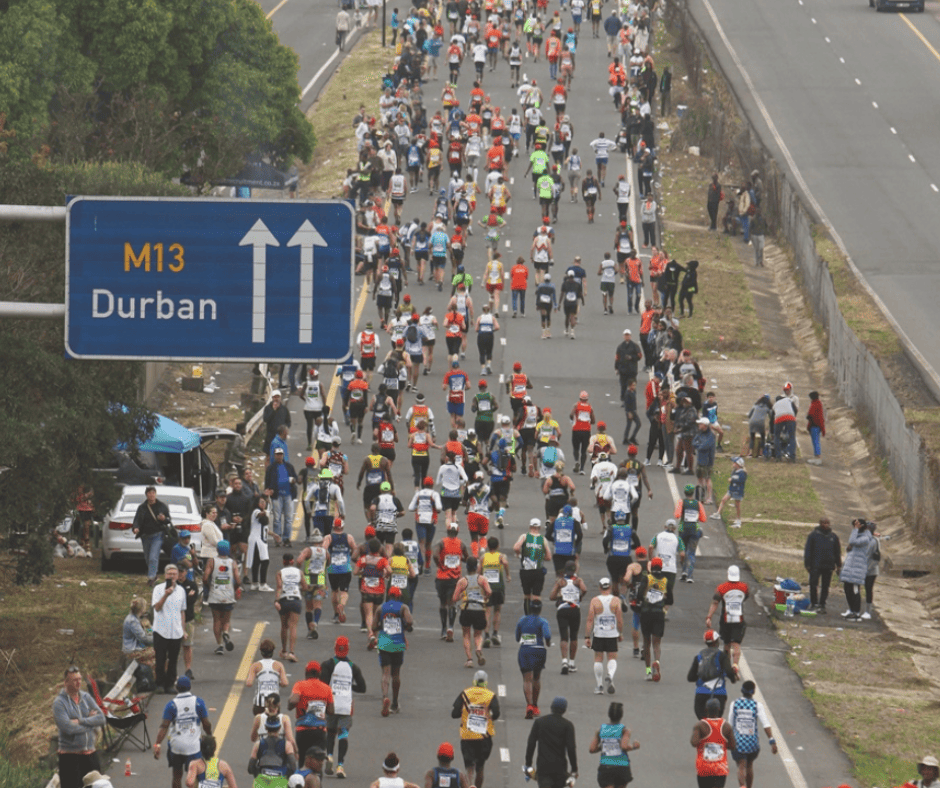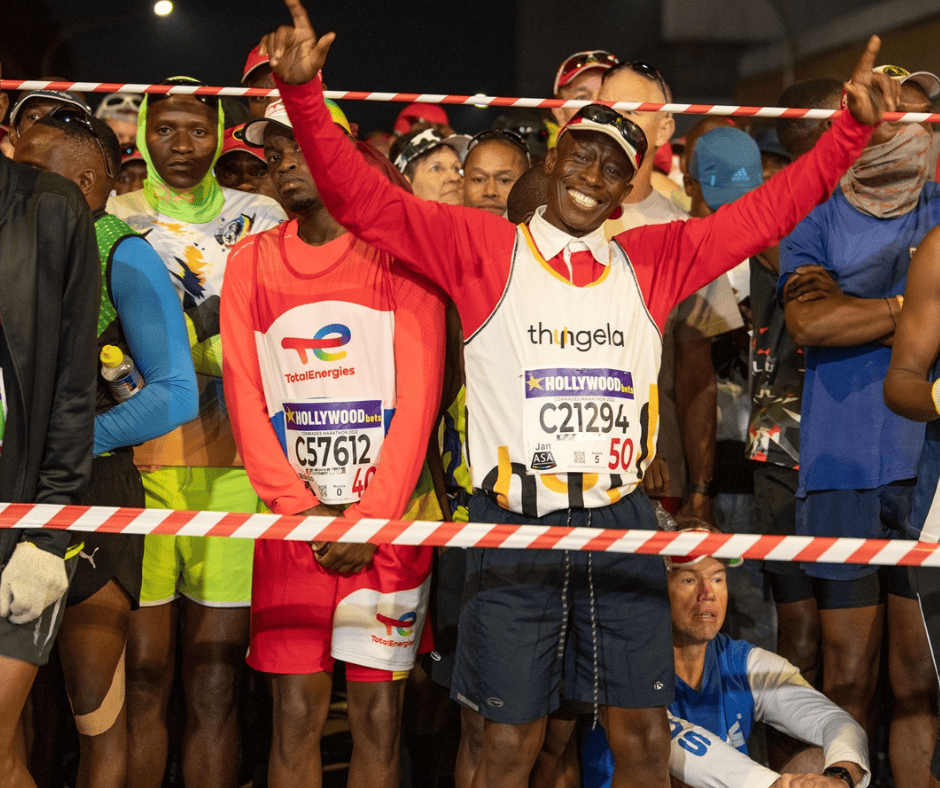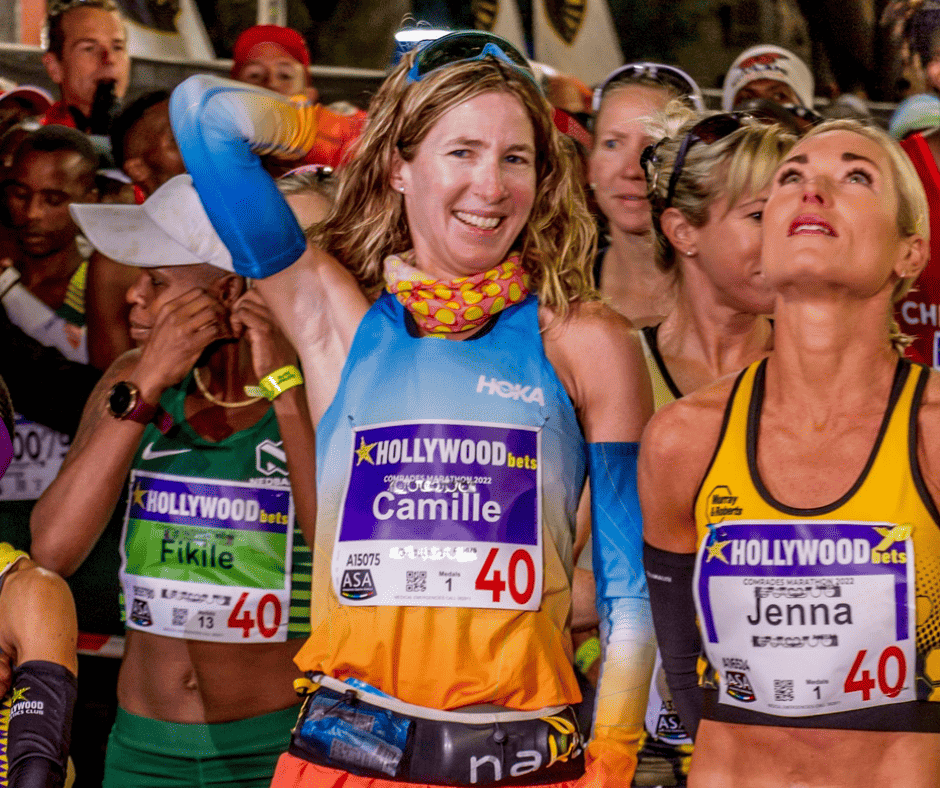In this article, we will provide optimal run/walk strategies for achieving bronze, silver, and Vic Clapham medals in the Comrades Marathon.
We emphasize the importance of incorporating strategic walk breaks to preserve energy, maintain freshness in the legs, and maximize chances of success in the race.
We also advise against solely focusing on improving seeding and highlighting the significance of consistent training and overall race-day performance.

Comrades Marathon: Run/Walk Strategy For a Bronze Medal
Recently, we discussed an effective strategy for achieving a bronze medal finish at the Comrades Marathon. The focus was on incorporating a run/walk approach to complete the race in under 11 hours.
We emphasized the importance of establishing a comfortable rhythm that would warrant a walk break. The goal is to avoid reaching a point of exhaustion before taking a break. Instead, the strategy aimed to preserve energy and keep the runner feeling fresh for a longer duration.
For participants following the bronze program, it is recommended to run between 3 and 5 kilometers before taking a 1-minute walk break. Additionally, during uphill sections of the race, it is advised to incorporate at least three 1-minute walks. The timing of these breaks could be adjusted based on personal preferences and how the legs felt during the run.
We also highlighted the significance of walk breaks, particularly during steep and extended climbs. These breaks served as valuable opportunities to rejuvenate the body and provide much-needed rest for the legs.
Remember, finding the right balance between running and walking is key to success. This approach allows runners to recharge and maintain momentum throughout the race, ultimately helping them achieve their desired finish time.
Comrades Marathon: Run/Walk Strategy For a Silver Medal
The Comrades Marathon, renowned for its grueling nature, demands a strategic approach to achieve the highly coveted silver medal. In this section, we delve into the intricacies of incorporating a run/walk strategy for a sub-7½-hour finish at this prestigious event.
Contrary to popular belief, walking plays a crucial role in maximizing performance, even for those aiming for a silver medal. I emphasize the significance of maintaining freshness in the legs, particularly during the latter stages of the race when maintaining a steady pace becomes challenging.
I stress that runners hovering near the silver medal cutoff point should strive to sustain a 5-minute-per-kilometer pace deep into the race. Achieving this requires a strategic blend of running and walking intervals.
Surprisingly, even those aiming for a sub-7-hour finish can benefit from incorporating walk breaks into their race plan.
I employed a substantial amount of planned walking during my own silver medal-winning performances.
For the silver medal pursuit, I suggest a strategy of running for 10 kilometers followed by a 1-minute walk. However, runners can extend their running segments to 15 kilometers before incorporating a 1-minute walk break.
Additionally, strategic walk breaks should be incorporated during the longer climbs, such as Fields Hill and Inchanga.

Even the formidable Polly Shortts, a notorious ascent in the race, may necessitate a few walking moments. These strategic breaks allow runners to conserve energy, ensuring a fresh and strong finish for the final 7 kilometers of the race.
I acknowledge the resistance some runners might feel toward incorporating walking into their strategy.
It is important to maintain a balance and prevent early exhaustion. Some runners may struggle to transition their marathon times to the Comrades Marathon due to an overly aggressive start.
I caution against this “strategy for disaster” and encourage a more calculated approach, including planned walk breaks.
Remember, the silver medal is within reach for those who embrace a well-balanced run/walk strategy. By preserving energy, maintaining freshness in the legs, and strategically incorporating walk breaks, runners can maximize their chances of success in this formidable race.
In this article, we provide valuable insights and expert advice on optimizing performance and managing challenges in preparation for the Comrades Marathon.
Comrades Marathon: Run/Walk Strategy For a Vic Clapham Medal
Let’s discuss the Vic Clapham medal, which represents an 11-12 hour finish.
To start, I’ve compiled a handy guide outlining how I believe runners should approach the run/walk strategy.
The key principle here is that when devising your strategy, you should aim to strike a balance where you feel that you’ve put in sufficient effort to earn a well-deserved break.
The rationale behind this method is to keep your legs relatively fresh for a longer duration, enabling you to sustain a particular average speed.
By incorporating walk breaks, you prolong your ability to maintain that speed, which would otherwise be challenging without intermittent rest.
For those targeting the Vic Clapham medal, my recommendation is to run for 10 minutes, followed by a 1-minute walk break.
When encountering hills along the route, a run/walk approach should be employed.
This can be customized based on personal preference, such as running for two lamp posts and then walking for one, or running for one lamp post and then walking for one. Emphasize more frequent walking on the hills to ensure you feel strong and capable as you enter the final third of the Comrades Marathon.
Remember, the run/walk strategy is a valuable tool for achieving your desired finish time. By preserving energy and incorporating strategic walk breaks, you enhance your chances of success in the demanding Comrades Marathon.
Comrades Seeding – Should you be chasing a better one now?
I’d like to address an important question regarding seeding and its impact on your race day performance.

One of our forum members raised a crucial point about chasing seeding during their peak mileage phase. As we approach the Comrades Marathon, many runners participate in marathons and ultra-marathons to improve their seeding. The question at hand is whether it’s worth pushing for a higher seeding, such as moving from a D seeding to a C, or if it’s more beneficial to focus on a more attainable seeding. This query applies not only to specific races but also to the overall training approach.
In response, I’d like to emphasize that the primary objective is to prioritize your training and overall race day performance. While aiming for a higher seeding may seem appealing, it’s essential to consider the effort required and potential consequences. In many cases, the gains achieved by improving seeding by a single block are minimal compared to the impact it can have on your training consistency and recovery.
It’s crucial to recognize that progress from a lower seeding to a higher one demands significant effort. The return on investment, in terms of improved race day performance, may not be as significant as anticipated. Additionally, chasing a higher seeding at this stage of your training can potentially compromise your overall training progress and increase the risk of injury.
Instead, I recommend focusing on training properly and consistently. Prioritize your training regimen and ensure you are following a structured plan that aligns with your goals. By dedicating yourself to consistent and focused training over the next several weeks, you will see more substantial improvements in your performance than by solely chasing a higher seeding.
Maintaining consistency is paramount during this crucial phase of Comrades Marathon preparation. By avoiding the temptation to pursue personal bests or higher seedings, you safeguard your training progress and reduce the risk of setbacks. The primary goal should be to build a solid foundation and optimize your overall endurance, strength, and race day strategy.
Remember, success in the Comrades Marathon is not solely determined by your seeding but rather by your preparation and execution on race day.
Make wise training decisions, stay committed to your training plan, and trust in your abilities.



Comments are closed.